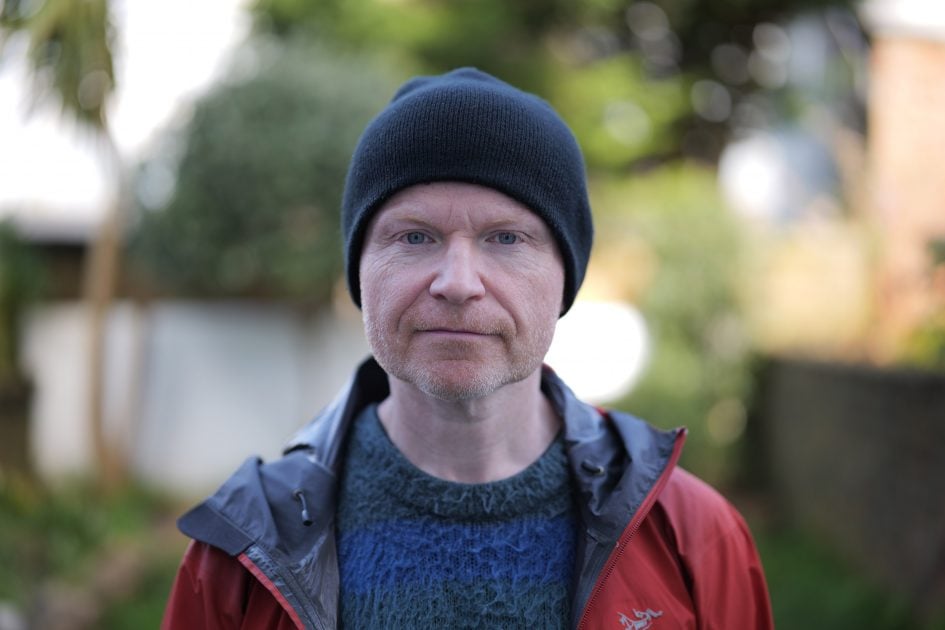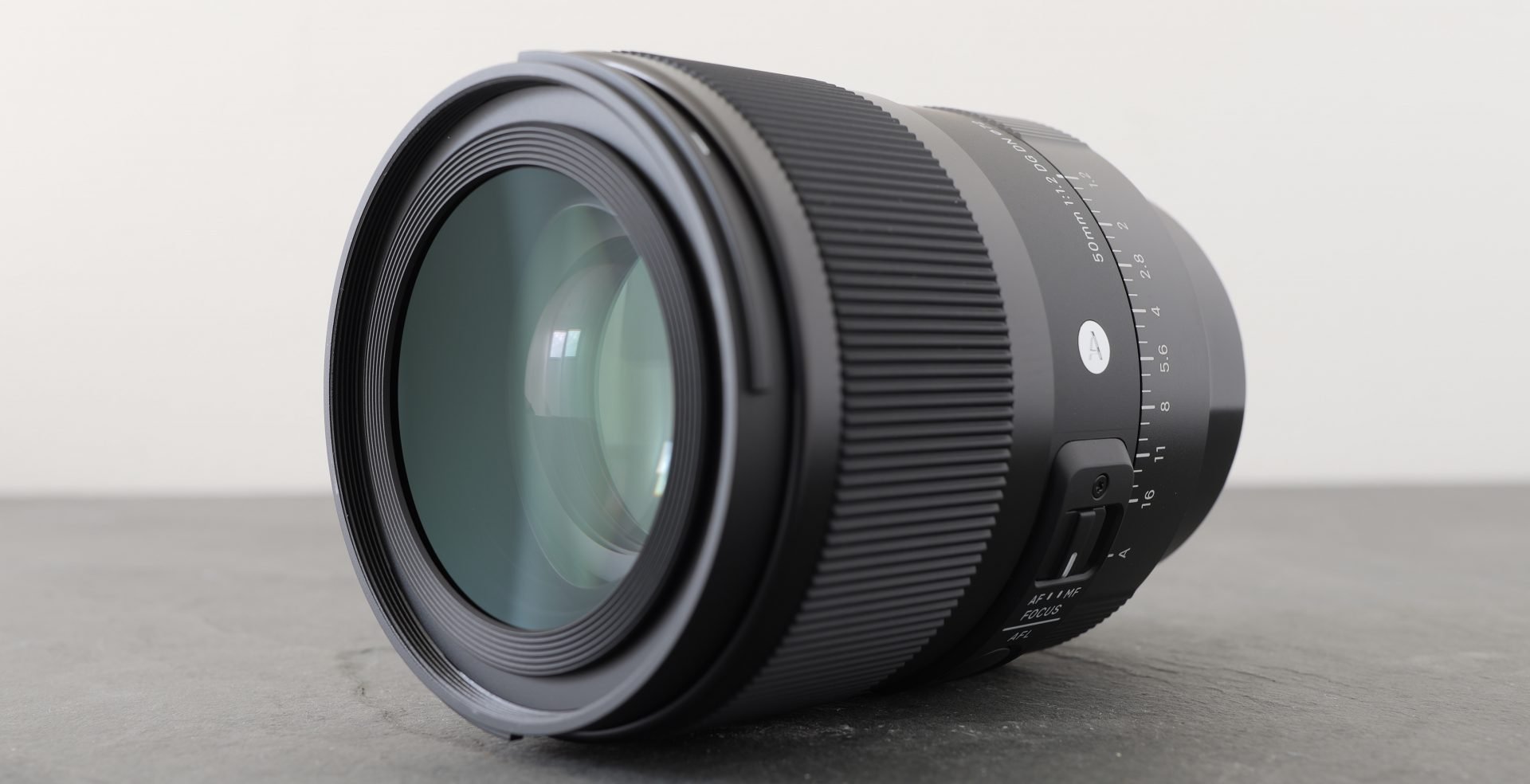Sigma 50mm f1.2 DG DN Art review
-
-
Written by Gordon Laing
Intro
The Sigma 50mm f1.2 DG DN Art is a standard prime lens with a very bright f1.2 aperture. Announced in March 2024 and initially available in Sony-e and Leica L-mounts, it costs around $1400 or £1300. For comparison, their earlier 50mm f1.4 DG DN Art, costs around $850 or pounds, so you’re paying just over half as much again for roughly half a stop of aperture.
That said, the new Sigma 50 1.2 is comfortably cheaper than other high-end standard primes for either e or L mounts. For those with Sony bodies, it undercuts Sony’s own 50mm f1.2 G Master, which typically costs around $2000 or pounds. That makes the Sigma 1.2 roughly two thirds the price, and actually closer to Sony’s 1.4 G Master which costs around $1300 or £1500.
Meanwhile for L-mount owners, it also undercuts Panasonic’s Lumix S Pro 50mm f1.4 which costs as much as $2200 or pounds. Suffice it to say we’re not short of standard prime lenses from budget to high-end, so let’s see how the latest Sigma performs. My full review is in the video below, but if you prefer to read the written highlights, keep scrolling!
Measuring 81mm in diameter, 109mm long and weighing 745g, the Sigma 1.2 is noticeably more compact than their previous 35 1.2 which was wider at 88mm, longer at 137mm, and much heavier at 1081g.
Sigma 50mm f1.2 DG DN Art: 81x109mm, 745g // Sony FE 50mm f1.2 GM: 87x108mm, 778g
But the real competition is Sony’s 50 1.2. Both lenses measure roughly the same length, but the Sigma is 6mm narrower and 33g lighter. This means Sigma’s being honest when it describes it as the lightest 50 1.2 in its class, but once in your hands, you’re unlikely to notice the 33g difference. Both are impressively light for their specification.
Just compare them to Canon’s RF 50 f1.2 and Nikon’s Z 50mm f1.2 S which tip the scales at 950g and 1084g respectively. Nikon’s is also the longest of these four 1.2’s.
Canon RF 50mm f1.2L: 90x108mm, 950g // Nikon Z 50mm f1.2 S: 90x150mm, 1084g
If you’re after a lighter 50 without compromising on quality, Sigma and Sony’s latest 1.4 models weigh 670 and 516g respectively.
Sigma 50mm f1.4 DG DN Art: 78x110mm, 670g // Sony FE 50mm f1.4 GM: 81x96mm, 516g
The Sigma 1.2 is made in Japan and like their other Art lenses, it’s very well-built, featuring dust and splashproof construction, including a rubber grommet at the mount, and a water and oil repellant coating on the front element. At the end of the barrel is a 72mm filter thread, the same as Sigma’s 50 1.4 and Sony’s 50 1.2, although Sony’s 50 1.4 is a tad narrower, allowing 67mm filters.
Sigma supplies a petal-shaped lens hood which twists onto the barrel. In contrast, Sony supplies their 50’s with rubber-tipped cylindrical hoods which allow you to stand them up more securely. Pushing a button on Sigma’s hood unlocks it, and it’s possible to reverse it over the barrel for transportation, while a plastic cap keeps the front protected. Like other high-end lenses, a padded carrying case is also included.
Starting at the mount-end of the lens is a wide aperture ring which turns from f1.2 to f16 in one third increments, with an A position at the end for body-based control.
Sandwiched between the aperture and focusing rings are a switch for auto and manual focus, a focus hold button which may be programmable depending on your body, and a switch to declick the aperture ring for silent adjustments. Meanwhile on the opposite side is a switch to lock the aperture ring to the A position. Like most autofocus mirrorless lenses, the manual focus is by wire, with the well-damped ring turning very smoothly.
Sigma supplied the L-mount version for my review, which I tested on the Lumix S5 II and x bodies, although most of my optical results equally apply to the Sony version. Due to a quirk of Lumix bodies though, the photo autofocus slows when connected to an external HDMI recorder, which makes it hard to demonstrate in a review. But anecdotally I found the autofocus speed fast and quiet in general-use, with the lens and body snapping into focus, especially when set to continuous AFC mode.
I can show you the video autofocus though, starting here with a single area focus-pull between the bottle in the foreground and the wall behind it. This was filmed at f1.2, where the S5 IIx is driving the lens nice and smoothly between subjects. I’d also say there’s not much change in magnification here, so breathing isn’t an issue in this situation.
Switching to the full area with human face detection enabled, the lens and camera combination also easily kept me in focus at the maximum aperture as I moved around the frame. You’ll also get an idea of the kind of blurring possible at these kind of distances, and I’ll be taking a closer-look at portraits later in the review.
I’d say the autofocus for photo and video is definitely good enough for day to day use, but if you’re a Sony owner who’s into action and burst shooting, you should be aware their latest and fastest bodies limit their top speed with third party lenses, typically to about 10fps. So if you want to exploit the fastest focus and bursts on a Sony body, you will probably need a Sony lens.
Another feature unsupported by third-party lenses on recent Sony bodies is compensation for focus breathing, where the view appears to zoom-in or out as you adjust the focus. Enabling compensation crops the image to the worst-case scenario, then cleverly maintains this field of view as you adjust the focus.
Perhaps in response to this, Sigma claims to have reduced breathing on the 50 1.2, so let’s have a look. Here’s a video I filmed on the S5 IIx with the lens closed to f16 and the focus manually adjusted from infinity to the closest distance of 40cm and back again. You can see the view appear to magnify as I focus closer, a little like zooming a lens in a bit.
In my tests the breathing on the Sigma 1.2 was certainly reduced compared to their 1.4 Art, and also an improvement over the Sony 50 1.2. Both the 1.2 lenses also share the same minimum focusing distance, but again if you’re willing to accept a crop, the Sony lens will support breathing compensation on the latest bodies.
Whether breathing is an issue in practice though depends on your subjects and expectations. It’s only really a problem for videographers, and as you can see in my examples, it’s not particularly visible across shorter ranges in typical use. I feel it’s become more of a talking point on YouTube than an actual serious issue for non-cinema lenses in general use. Let me know in the comments what you think.
Moving on, I wanted to share one more video demonstrating how the lens works with the built-in IBIS stabilisation on the Lumix cameras. This was handheld with IBIS alone and the lens at f1.2, while a fixed AF area towards the left of the frame was positioned over the guitars. Third party lenses don’t always work as well with stabilisation as the manufacturer’s own lenses, but I was happy with this result on the S5 IIx.
Ok, now for my photo quality tests, starting with a distant real-life landscape, and the view angled so that details run right into the corners. I prefer to test lenses with real-life subjects at both near and far distances as I feel it better reflects how a lens performs than a chart photographed at close range. It’s harder work, but I think it’s worth the effort.
Taking a closer look at the centre of the image with the aperture wide-open at f1.2 shows very crisp details. Stopping-down the aperture a little brings fractional improvements to the ultimate sharpness, arguably peaking around f2 to 2.8, but I’d be happy shooting the lens wide-open for a subject near the centre.
Now let’s return to the version at f1.2 before heading into the far corner. Here you’ll find a little darkening due to vignetting, as well as a slight reduction in ultimate crispness, but as I gradually close the aperture you’ll see both improve and look great by f2.8.
In this series of shots, the lens was focused in the middle of the frame, but repeating them with the focus area moved out to the corner delivered much the same result, proving the lens has a nice flat field.
Looking back at my landscape shots taken with the Sony 50 1.2 GM showed similar performance overall, with the lens delivering similarly sharp detail in the middle wide-open, and only needing to be closed a stop or two to maximise the quality across the frame.

Above: Moving onto portraits, here’s a shot taken with the Sigma 50 1.2 with the aperture wide-open of course, and using face and eye detection on the Lumix S5 IIx.
Taking a closer look at my eyes – and sorry, my wrinkles too – shows a tremendous amount of detail in the focused areas, while the very shallow depth of field has thrown the background nicely into blur, with a nice fall-off that starts pretty much at my coat hood.
Let’s put the Sigma lens on the left and my portrait from the Sony 50 1.2 on the right for a quick comparison. Now there’s three years between these shots, not to mention different cameras and conditions, but if you can look beyond that, you’ll actually see similar rendering styles here – not just the degree of blurring, but how it falls-off.

Above: For a closer examination of bokeh, it’s time for my ornament test with a bunch of fairy lights in the background. Here’s the Sigma 50 1.2, wide-open and focused as close to the top of the ornament as I could.
Even though the lights aren’t far behind, the large aperture has rendered them into satisfyingly large bokeh blobs, impressively bereft of onion-ring textures within or undesirable outlining. A solid start.
Let’s now gradually close the aperture to see the effect of the diaphragm system which is Sigma’s first to use 13 blades. To do it justice I’m going to initially use the finest one-third stops between f1.2 and f2, where you’ll see the blobs become more uniformly round across the frame, and minimal evidence of a geometric shape.
From f2 onwards I’ll switch to single stop increments, but again you’ll see the bokeh blobs remaining well-behaved and mostly circular. Very impressive performance from the new Sigma.
And even though they’re three years apart and using different bodies, let’s pop the Sigma on the left and the Sony on the right, both at f1.2 from a similar distance. Sure the lights have been rearranged in that time, but again the rendering style is pretty similar here.
Switching them to versions where the aperture’s closed a little, reveals more of the impact of their respective diaphragm systems. Once again 13 blades from the Sigma on the left versus 11 from the Sony on the right, and if you’re really looking, you could argue the blobs on the Sony are a tad more geometric with crisper edges, perhaps due to their distance, but I don’t have a preference here, do you?
So before wrapping-up, one last test, showing the Sigma 50 1.2 manually focused as close as it could to a ruler. Here I’ve managed to reproduce 195mm across the frame, and while there’s very slight softness at the far edges, it sharpens up nicely if you close the aperture a tad.
Placing the Sigma at the top and the Sony at the bottom shows both lenses are actually capable of a very similar magnification. I measured around 200mm from the Sony, giving the Sigma a small benefit side-by-side here, but in real-life terms I’d rank them as similar in closeup magnification and sharpness.
Check prices on the Sigma 50mm f1.2 DG DN Art at B&H, Adorama, WEX UK or Calumet.de. Alternatively get yourself a copy of my In Camera book, an official Cameralabs T-shirt or mug, or treat me to a coffee! Thanks!
 The Sigma 50mm f1.2 DG DN Art stands out in a crowded market of 50mm lenses by delivering excellent performance across the board, coupled with a bright aperture packed into a surprisingly narrow, light and competitively priced body. In my tests it was sharp for subjects near and far, and very respectable into the corners, with only mild softness and vignetting in the extremes when wide-open. Close it even just a stop or two and you’ll enjoy a flat field with crisp results throughout. Of course you’ll want to mostly shoot it at f1.2 where it’ll deliver attractive rendering, with smooth roll-off and large bokeh balls bereft of undesirable textures or outlining. Two things really stood out for me during my tests: first, I didn’t notice any undesirable artefacts, and secondly I was struck by how similar my results looked to the Sony 50 1.2 G Master, a doubly impressive feat since that’s not only one of the best standard lenses out there but Sigma’s essentially matched it at two thirds the price while shaving a few grams from the weight. As always, Sony owners have to weigh-up third-party restrictions. The focus breathing compensation and fastest burst speeds on the latest bodies are only supported with Sony’s own lenses. But this may not matter to you, and it’s hard to ignore the price of Sigma’s 50 1.2 Art or indeed the 1.4 Art which both comfortably undercut Sony’s versions. For L-mount owners, it’s an easier decision with the lens slotting between Panasonic’s 1.8 and 1.4 on price, but more compelling than either for me personally. Bottom line, the 50 1.2 Art is a great lens at a great price with Sigma being one of the strongest allies to both the e and L-mount systems. I only wish Canon and Nikon full-framers could also enjoy these lenses.
The Sigma 50mm f1.2 DG DN Art stands out in a crowded market of 50mm lenses by delivering excellent performance across the board, coupled with a bright aperture packed into a surprisingly narrow, light and competitively priced body. In my tests it was sharp for subjects near and far, and very respectable into the corners, with only mild softness and vignetting in the extremes when wide-open. Close it even just a stop or two and you’ll enjoy a flat field with crisp results throughout. Of course you’ll want to mostly shoot it at f1.2 where it’ll deliver attractive rendering, with smooth roll-off and large bokeh balls bereft of undesirable textures or outlining. Two things really stood out for me during my tests: first, I didn’t notice any undesirable artefacts, and secondly I was struck by how similar my results looked to the Sony 50 1.2 G Master, a doubly impressive feat since that’s not only one of the best standard lenses out there but Sigma’s essentially matched it at two thirds the price while shaving a few grams from the weight. As always, Sony owners have to weigh-up third-party restrictions. The focus breathing compensation and fastest burst speeds on the latest bodies are only supported with Sony’s own lenses. But this may not matter to you, and it’s hard to ignore the price of Sigma’s 50 1.2 Art or indeed the 1.4 Art which both comfortably undercut Sony’s versions. For L-mount owners, it’s an easier decision with the lens slotting between Panasonic’s 1.8 and 1.4 on price, but more compelling than either for me personally. Bottom line, the 50 1.2 Art is a great lens at a great price with Sigma being one of the strongest allies to both the e and L-mount systems. I only wish Canon and Nikon full-framers could also enjoy these lenses.



